Last week I visited a very special garden, where rock outcroppings enhanced with shade-loving plants create an atmosphere of deep serenity.
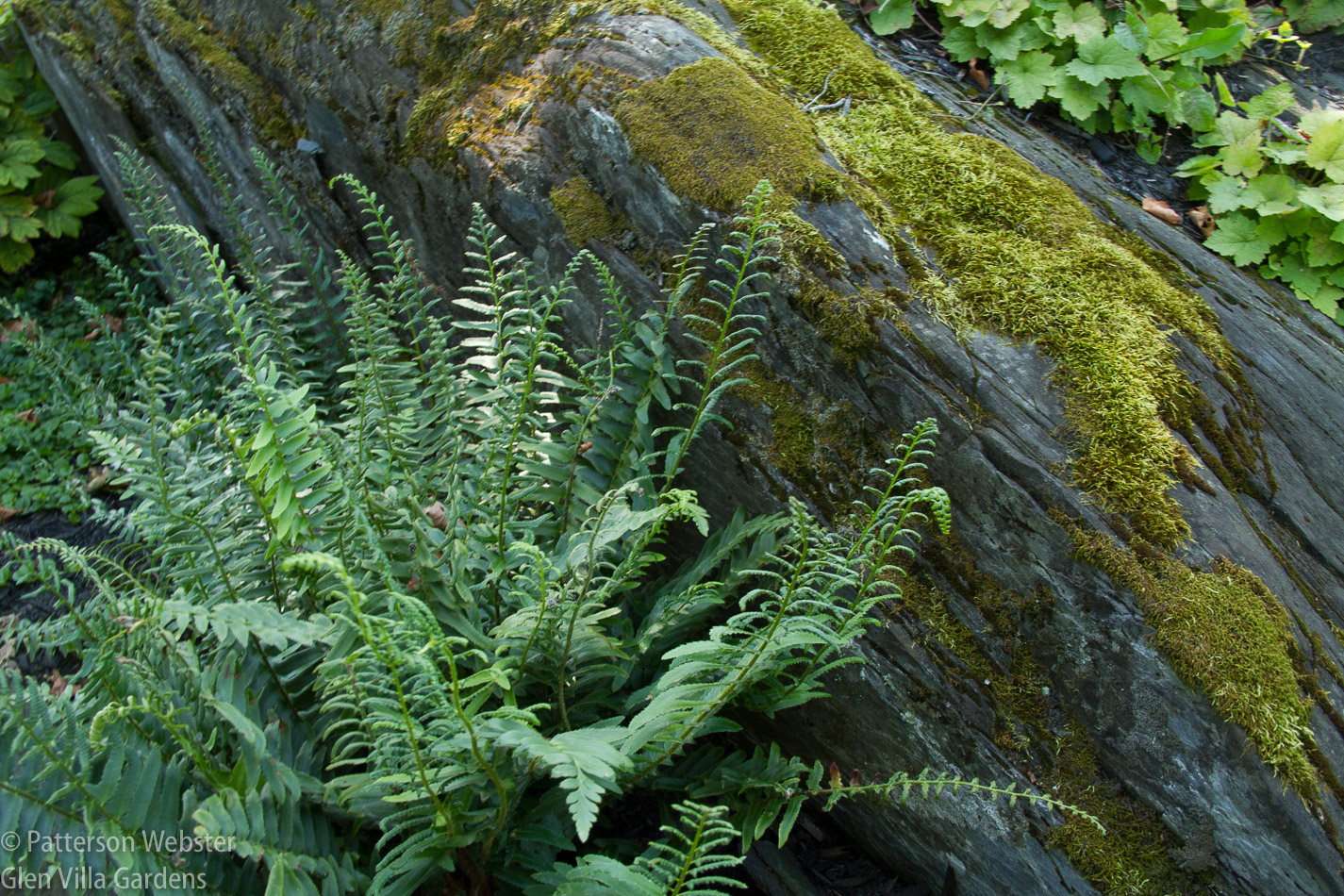
Polystichum, or Christmas fern, is found in shady woodlands throughout Quebec. Note the small patch of tiarella cordifolia, another indigenous plant, at the top of the photo.
Developed over the last fifteen years by designer Michiko Gagnon, the garden is at the end of a cul-de-sac in Quebec’s Eastern Townships, not far from the U.S. border. It’s an idyllic setting, with an old farmhouse that she and her husband, the artist Charles Gagnon, renovated some 40 years ago. Now, near the house at the edge of a sunny lawn, Michiko has placed two wooden chairs.

Who wouldn’t want to linger here in the shade on a hot day, or in the sunshine when it is cool?
The chairs face a typical Township’s view. It isn’t grand or spectacular, rather it is gentle and comfortable, the sort of landscape you can relax into. But the view seems to stretch out forever, through farm fields to a dark green forest that merges seamlessly into rolling hills and shades of blue.
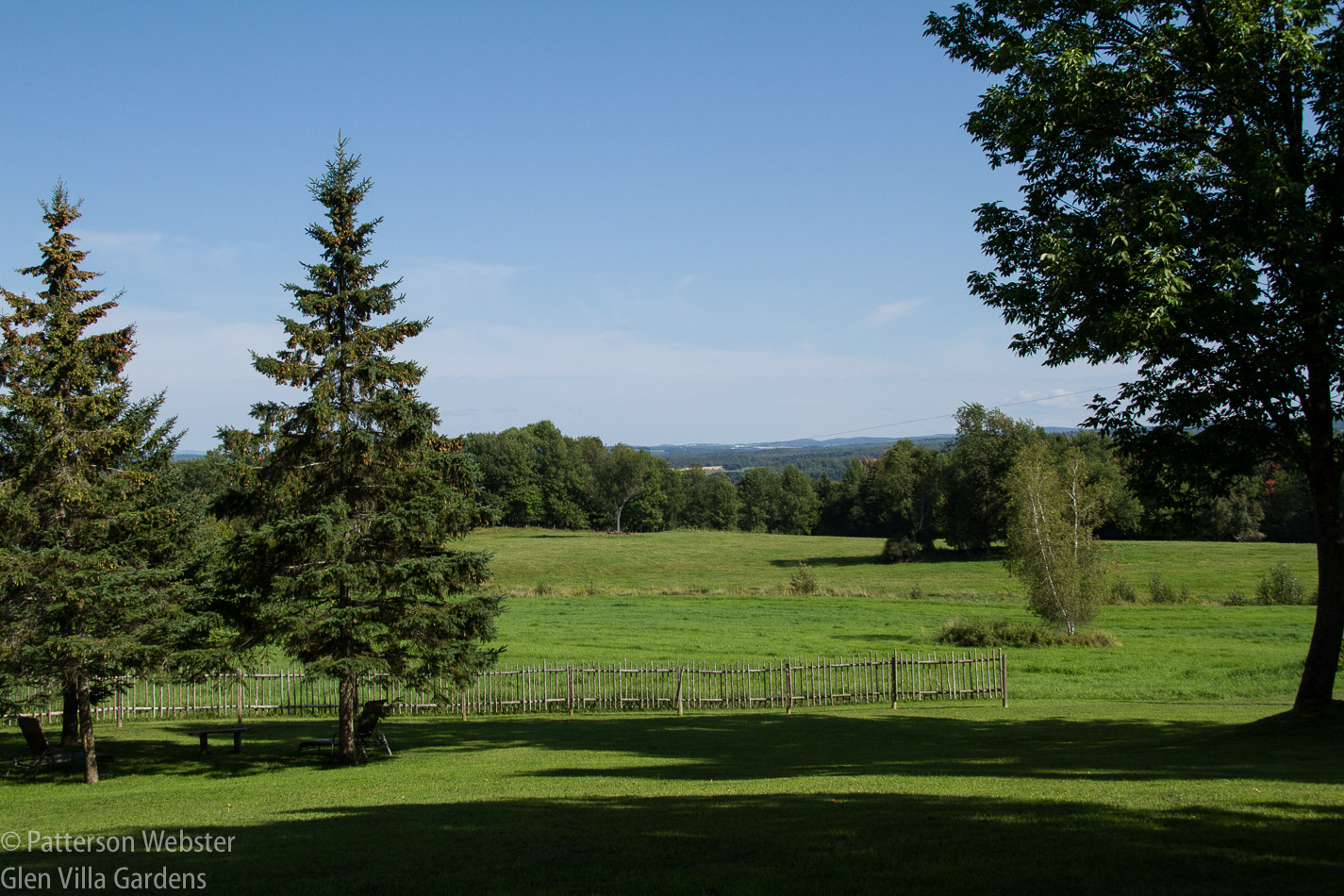
From Michiko’s house the view extends for miles.
It’s hard for a garden to compete with that kind of pull, but Michiko’s garden succeeds. An intriguingly constructed fence is the first clue as to how it does this. Marking the division between domestic and wilder spaces and stopping the eye, the fence begs for closer inspection.
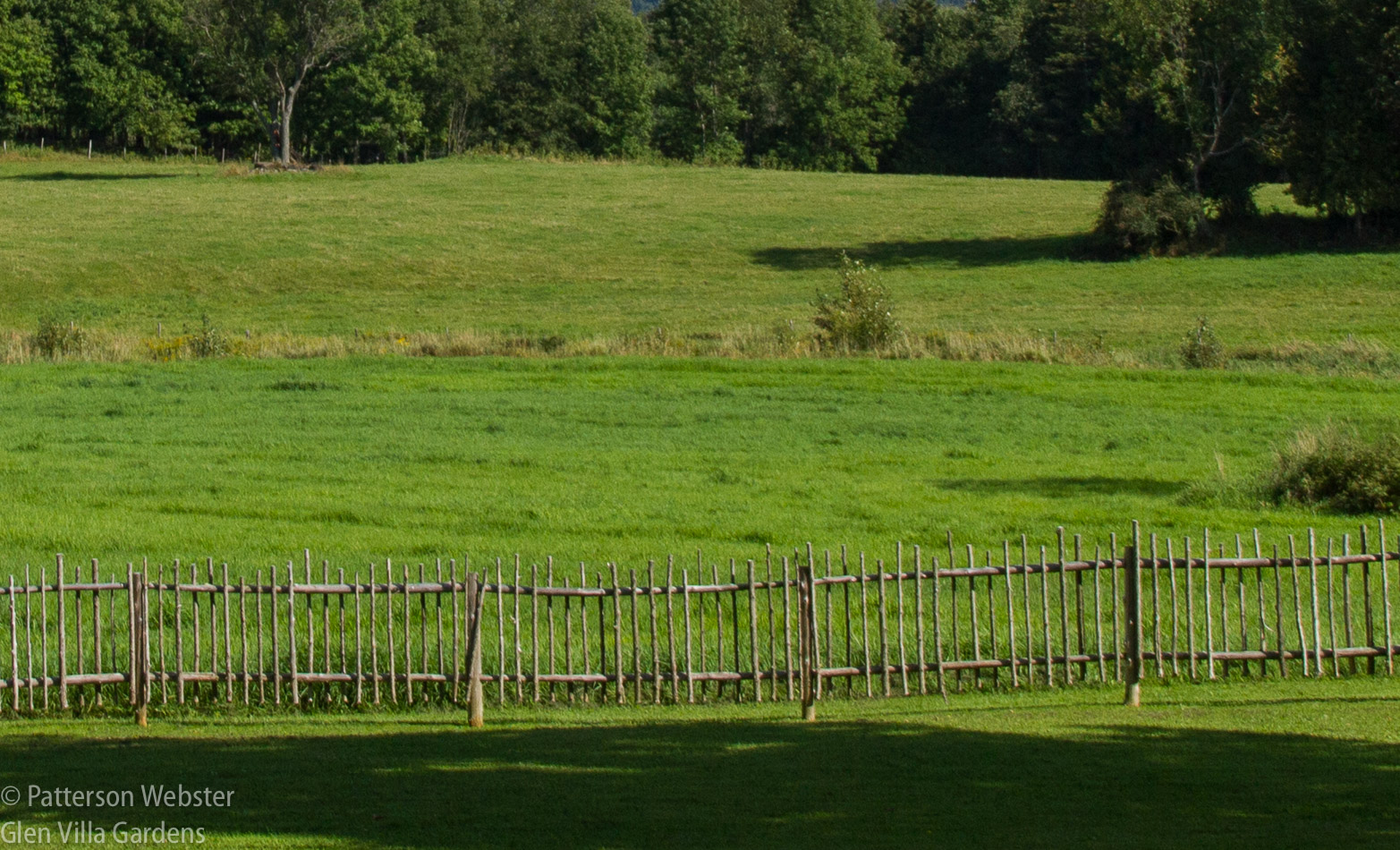
An irregular pattern of straight wooden sticks establishes a satisfying rhythm to this fence bult by local craftsman William Lucy.
And close inspection is key to the garden’s success. A fern placed in exactly the right spot draws the eye and enhances the beauty of a rippled rock.
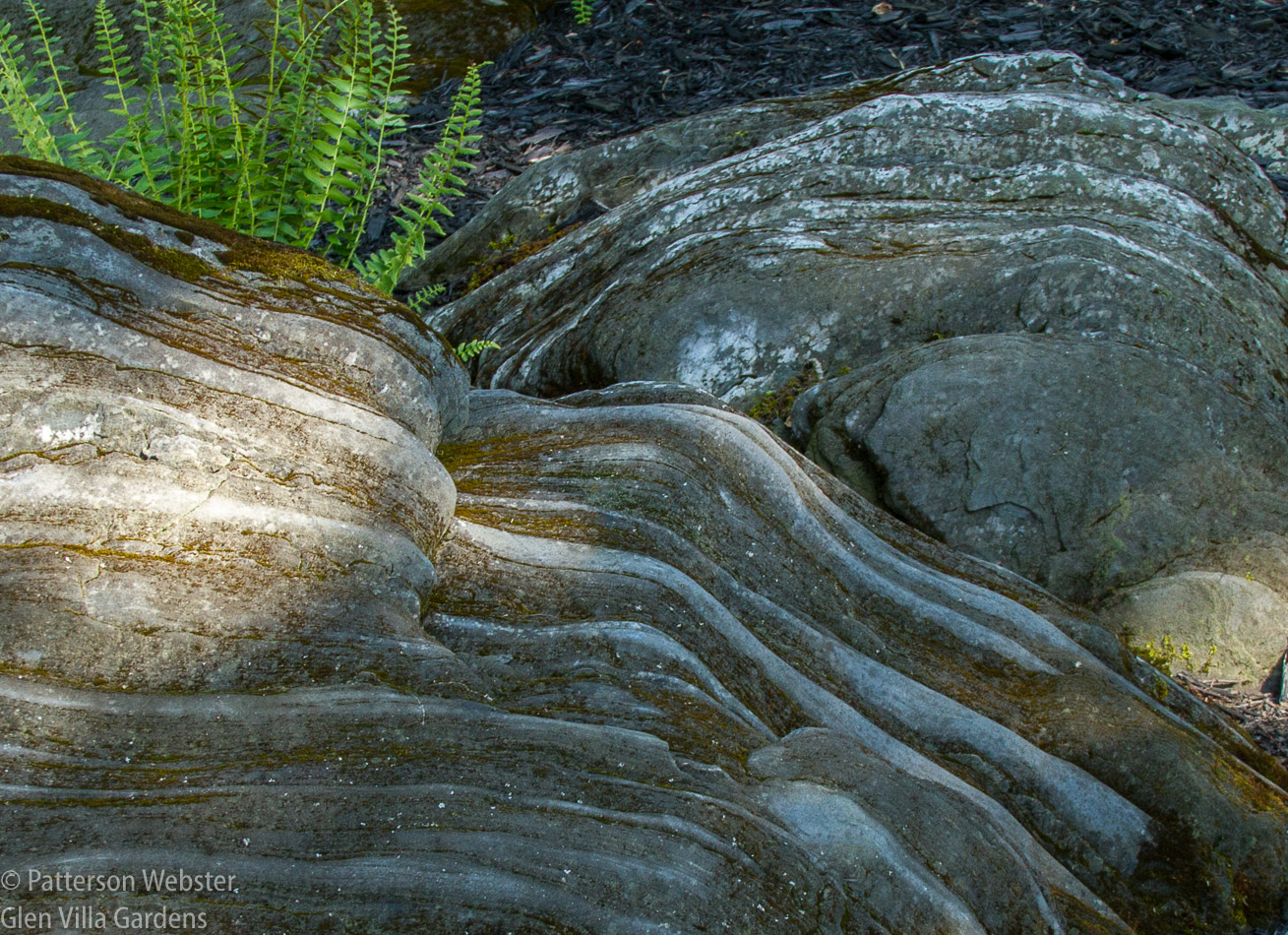
Striations in the rock suggest ripples in a stream. Who can explain what causes the different colours of rock, or why they are shaped as they are?
A sturdy tree growing on top of another rock appears even sturdier with a frothy green skirt of corydalis lutea at its feet.
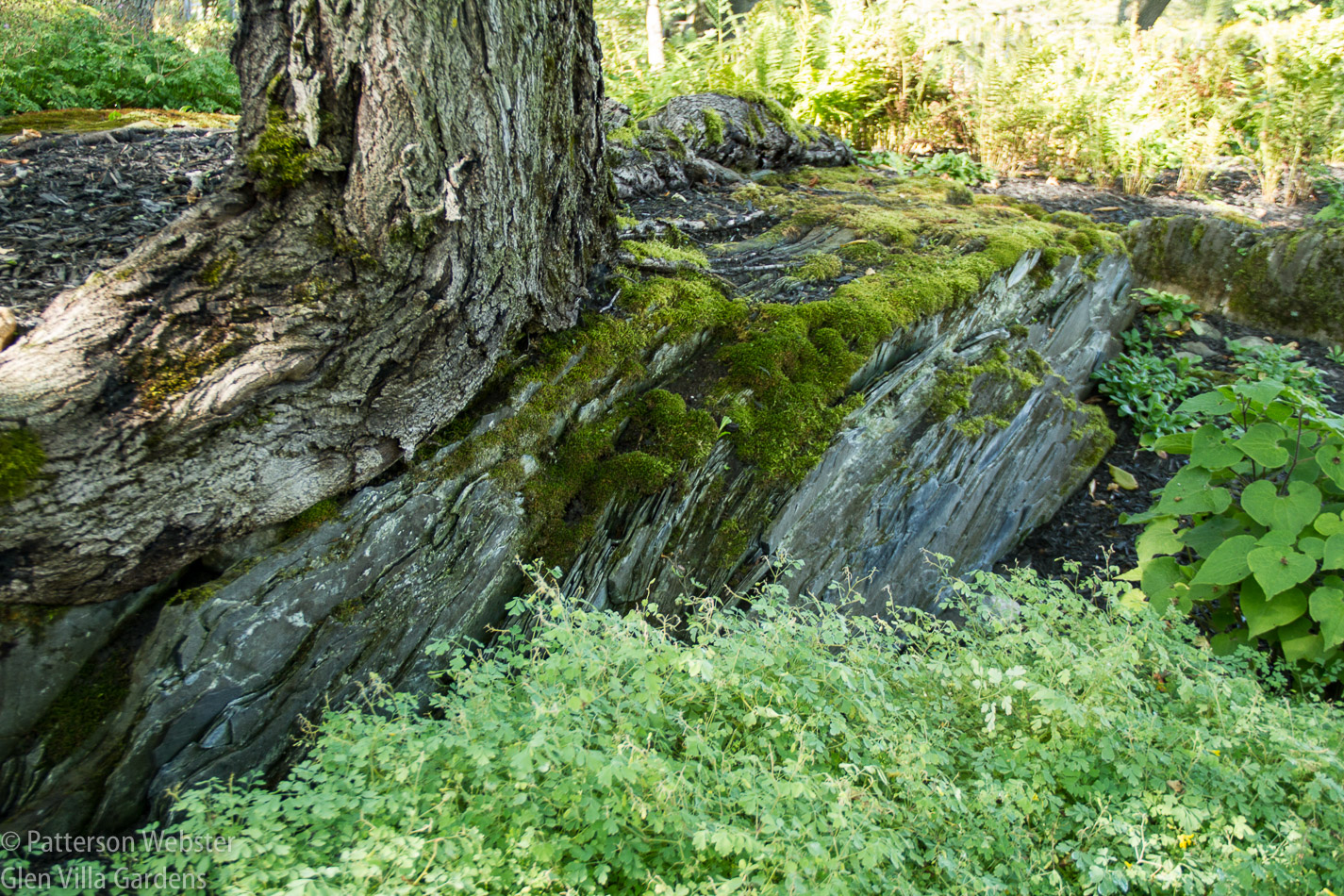
I was so intrigued by the plantings that I failed to note what kind of trees were growing.
Colour and texture provide subtle contrasts throughout. Set against the olive tones of a moss-covered rock is the fresher green of pennywort, or Cymbalaria muralis, one of many creeping plants that Michiko has used.

Pennywort goes by many different names. It isn’t indigenous but has naturalized throughout most of North America.
The subtle coloration of Diervilla and its tiny yellow blossom add a point of light in the deep shade.
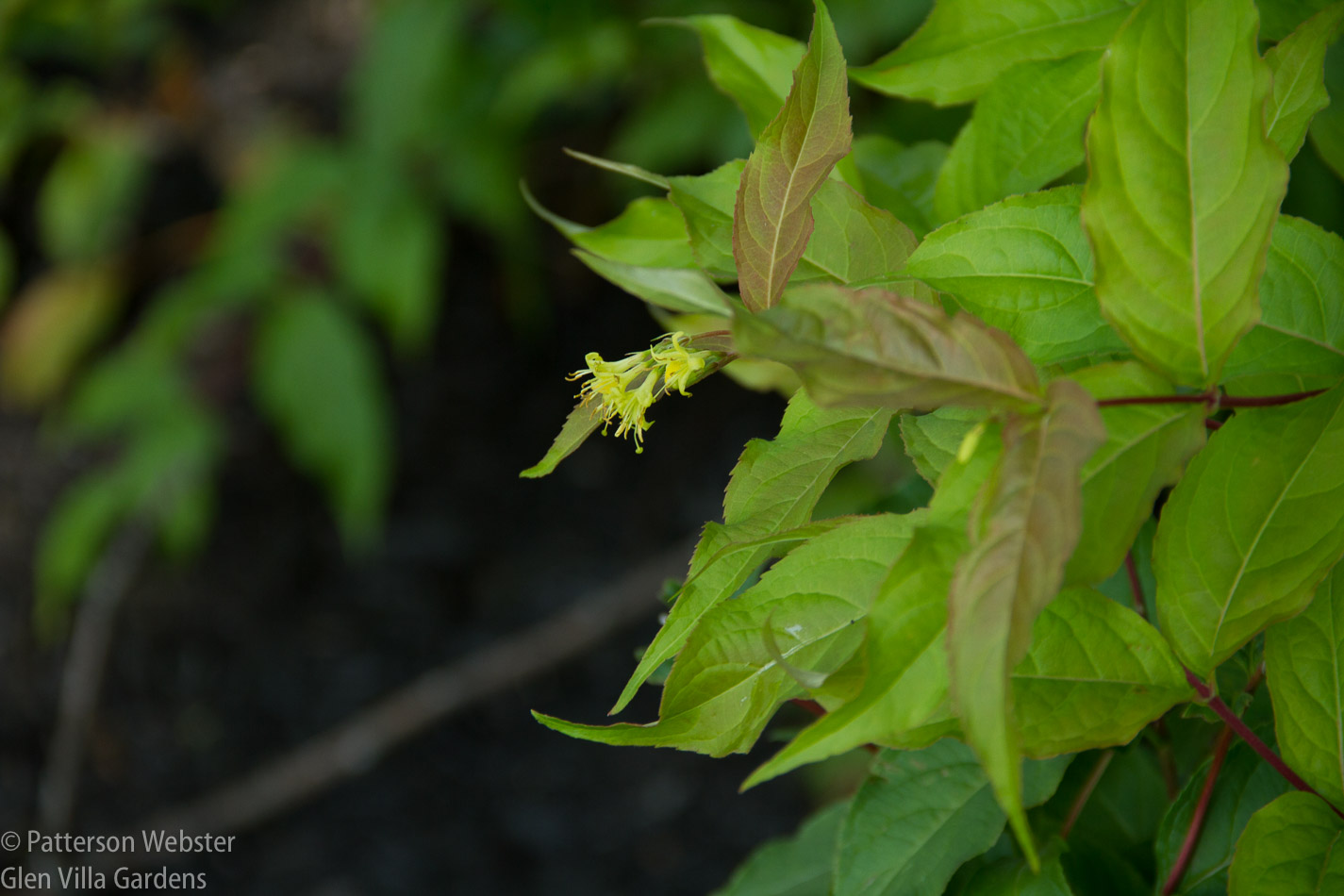
This is the straight variety of Diervilla, not one of the newer cultivars. It was planted by the invaluable Marie-Josée Laurin, Michiko’s knowledgeable assistant.
Dark mulch on planted areas allow subtle differences in shades of green to emerge.
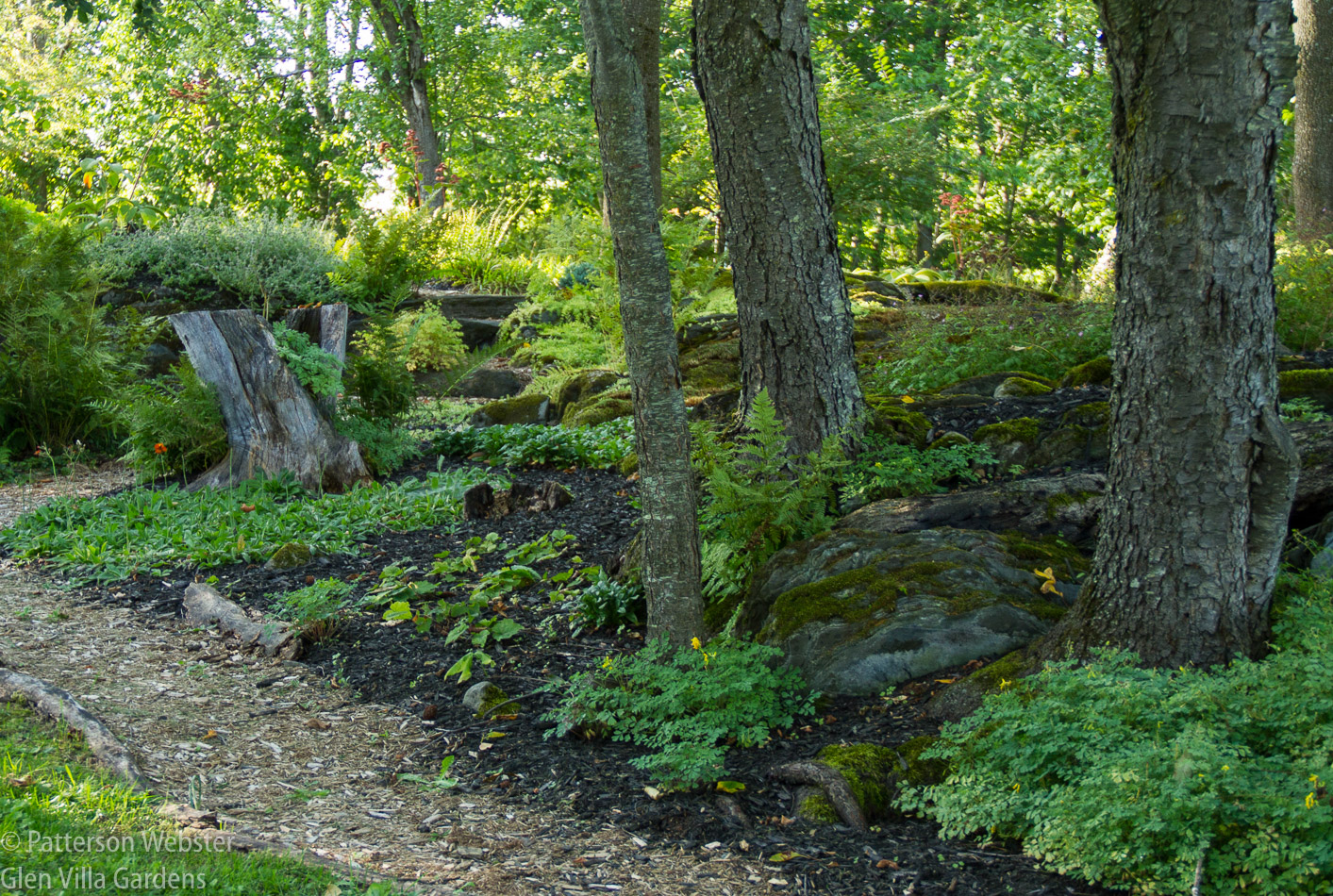
Geranium robertianum is one of many indigenous plants that make Michiko’s garden special.
Not all the plants are indigenous but all are chosen for their particular colour, texture or shape.
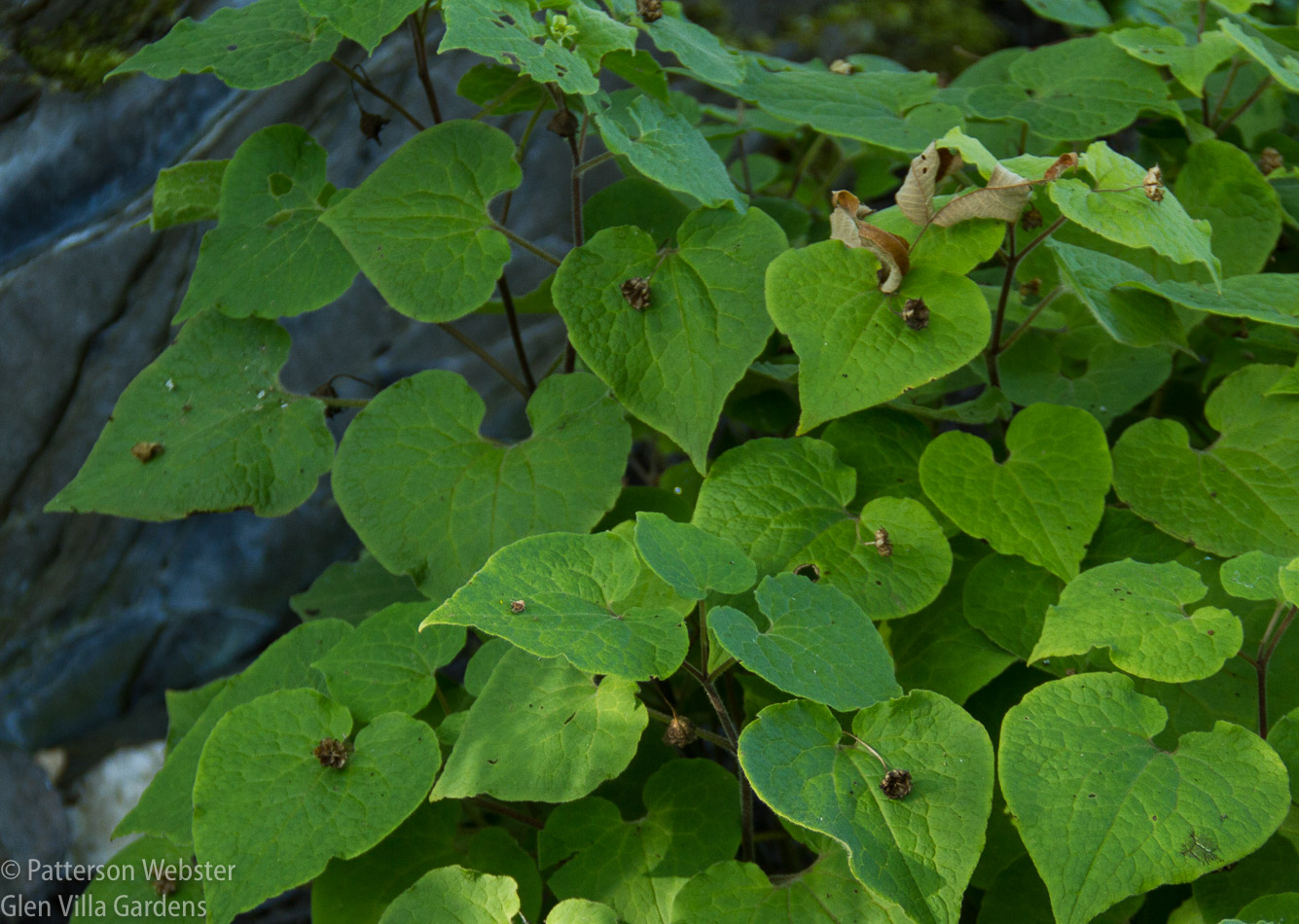
Saruma henryii feels right at home in Michiko’s garden. And don’t you love the heart-shaped leaves?
Tree stumps gathered from surrounding woods add a timeless quality to the garden. Were the stumps below once trees growing in place, or were they brought in from somewhere else? It’s hard to know. But whichever, their presence makes the garden feel as if it has always been here.
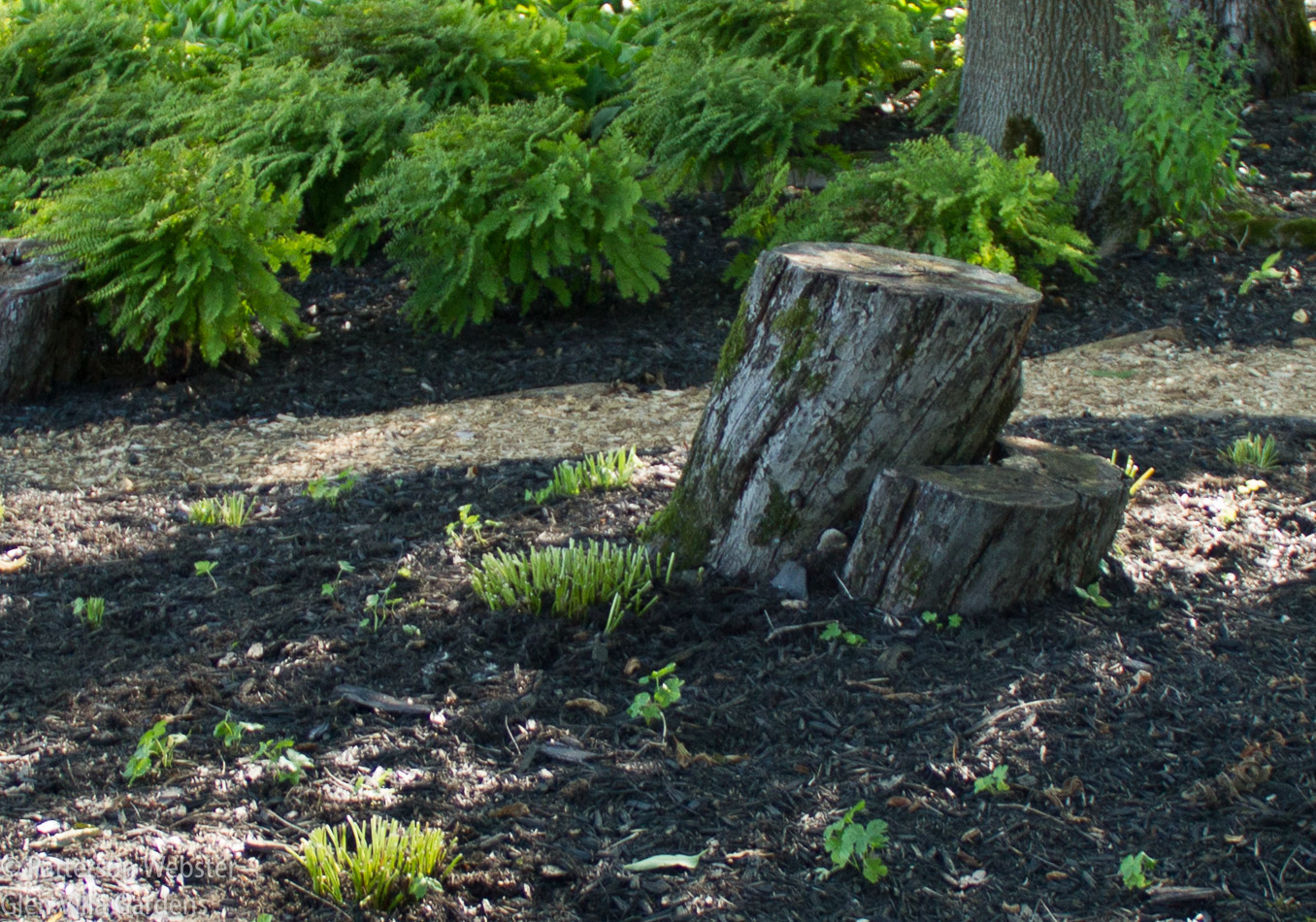
By this time of year in Quebec, many plants have been cut back hard. But the maidenhair ferns in the background were still in their full glory.
Each season has its star performers — blue Siberian iris in early summer, Japanese anemones in late.

The light wasn’t great when I took this photo — but believe me, the anemones were a soft pink cloud rising above the hard grey stone.
But the stars never throw the garden off balance. This is the second time I’ve visited Michiko’s garden, and on both visits I’ve been struck by its restraint. This isn’t an ‘in your face’ garden, it’s a garden of nuance, where subtleties have room to shine.
Both visits have been at the end of summer, when the garden isn’t at its best. Or so Michiko claims. I found it quite splendid both times, but next summer I vow to return earlier, to see if she is right. And to sit once again to enjoy the garden’s peace.
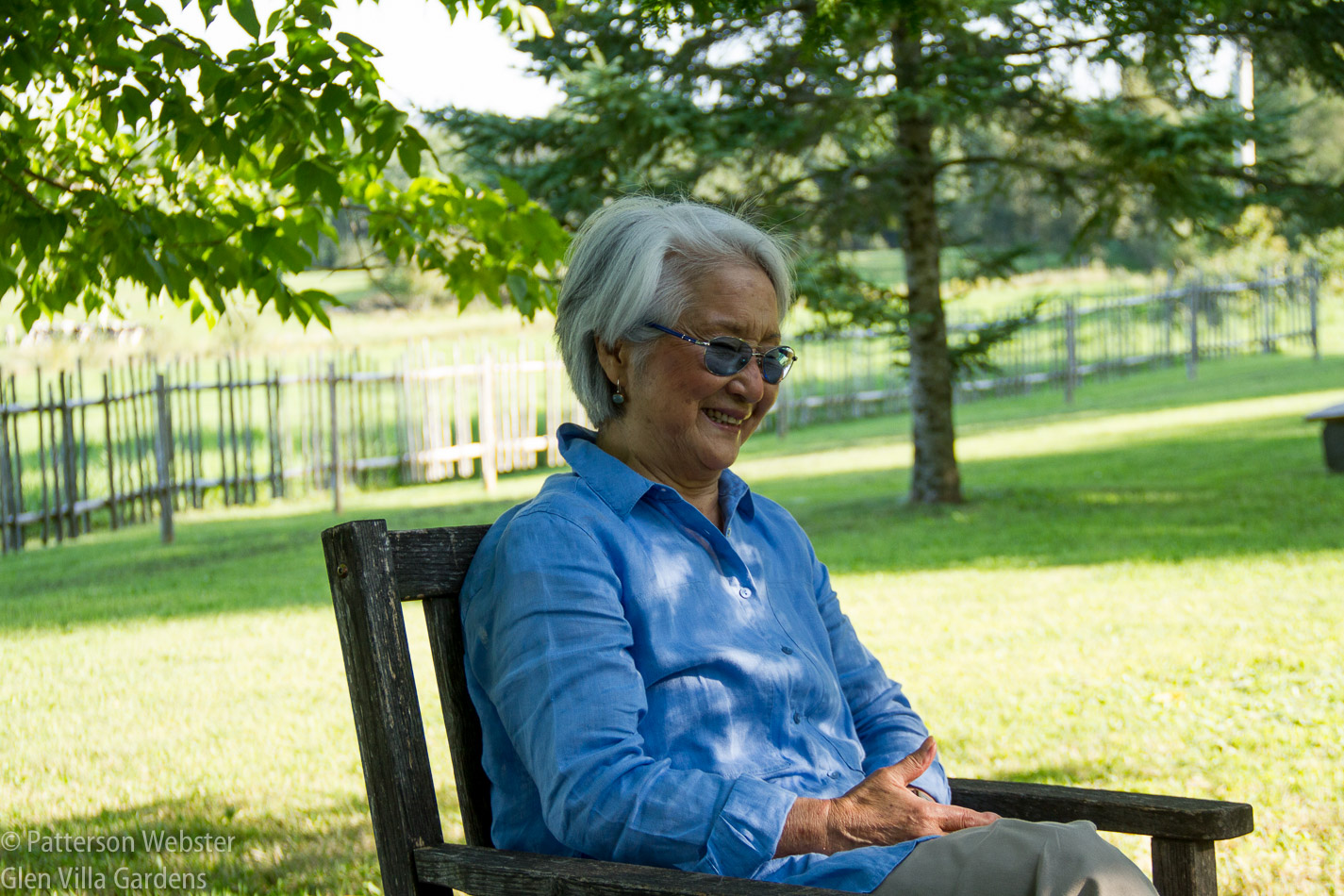
Michiko Gagnon relaxing in the garden.







A garden truly lovely in its thoughtful simplicity !
You identified the character exactly, Judy. Simple, thoughtful, beautiful.
I love the mix of stone, moss, and ferns.
So do I, Jason. And while the garden is not Japanese, it does somehow partake of the spirit of Japanese gardens. Not surprising, I suppose, since it reflects the background of the garden maker.